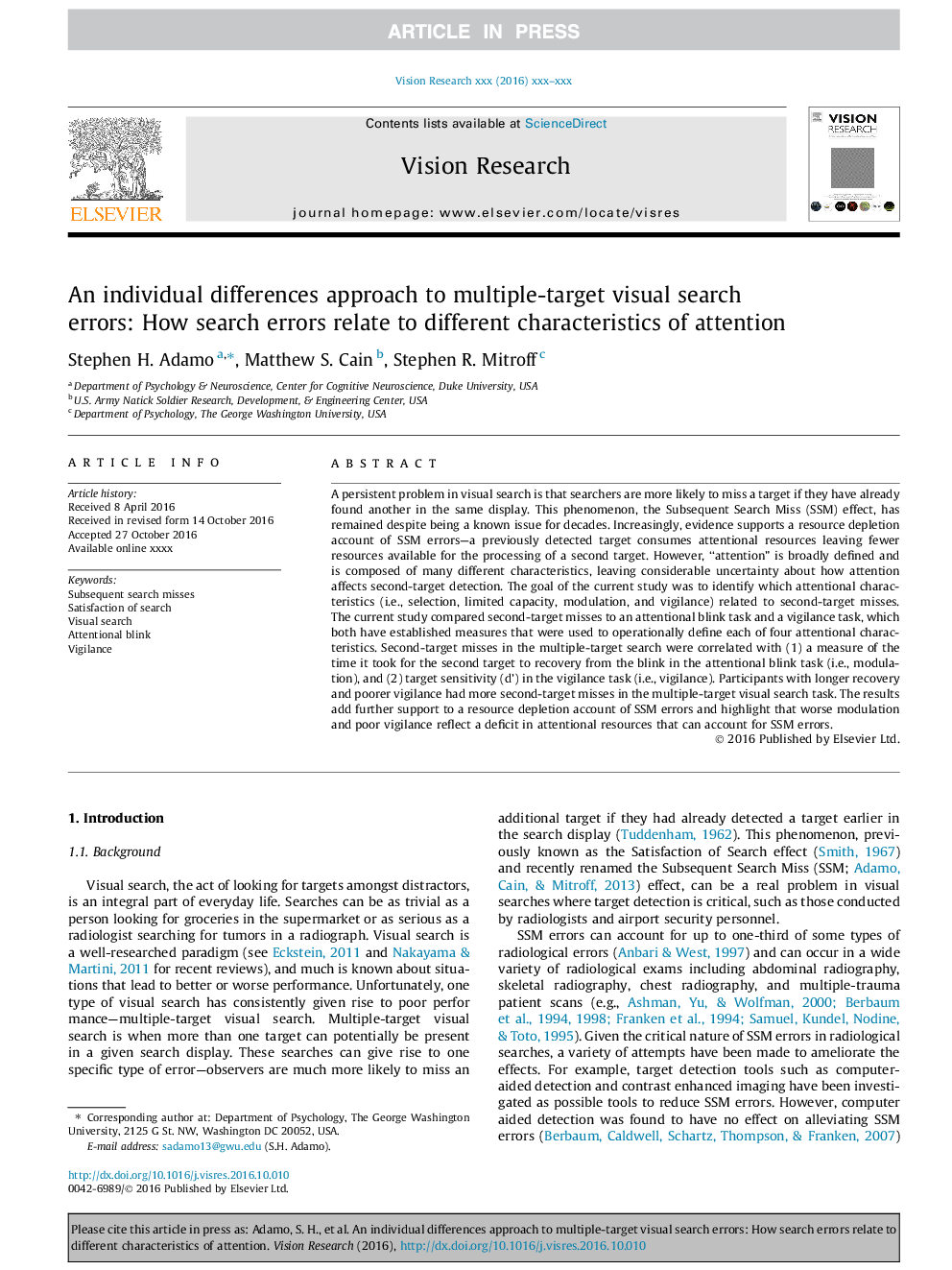| Article ID | Journal | Published Year | Pages | File Type |
|---|---|---|---|---|
| 8795366 | Vision Research | 2017 | 8 Pages |
Abstract
A persistent problem in visual search is that searchers are more likely to miss a target if they have already found another in the same display. This phenomenon, the Subsequent Search Miss (SSM) effect, has remained despite being a known issue for decades. Increasingly, evidence supports a resource depletion account of SSM errors-a previously detected target consumes attentional resources leaving fewer resources available for the processing of a second target. However, “attention” is broadly defined and is composed of many different characteristics, leaving considerable uncertainty about how attention affects second-target detection. The goal of the current study was to identify which attentional characteristics (i.e., selection, limited capacity, modulation, and vigilance) related to second-target misses. The current study compared second-target misses to an attentional blink task and a vigilance task, which both have established measures that were used to operationally define each of four attentional characteristics. Second-target misses in the multiple-target search were correlated with (1) a measure of the time it took for the second target to recovery from the blink in the attentional blink task (i.e., modulation), and (2) target sensitivity (d') in the vigilance task (i.e., vigilance). Participants with longer recovery and poorer vigilance had more second-target misses in the multiple-target visual search task. The results add further support to a resource depletion account of SSM errors and highlight that worse modulation and poor vigilance reflect a deficit in attentional resources that can account for SSM errors.
Related Topics
Life Sciences
Neuroscience
Sensory Systems
Authors
Stephen H. Adamo, Matthew S. Cain, Stephen R. Mitroff,
